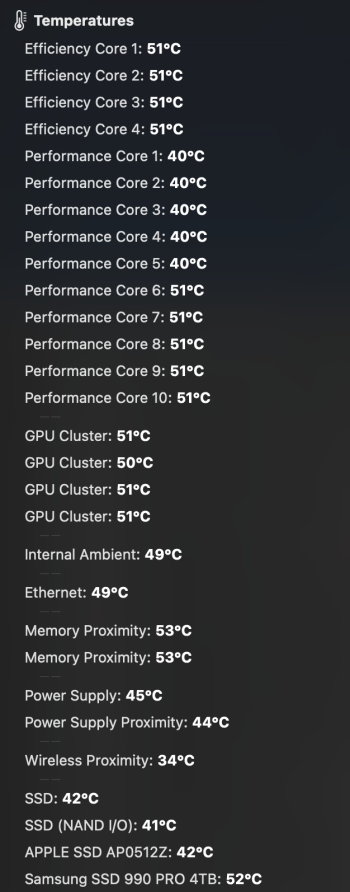Max Tech on YT did some thermal testing, and the CPU maxed out around 105 deg. C. It showed signs of throttling at this point, but not much.
I think we are in an era where maximum performance is not constant, but floats around some nominal value.
The latest AMD processors are thermal-limited to 100 deg. C and designed to run at the thermal limit rather than a clock speed limit. The "max clock" is 4.8 GHz, but you won't necessarily get that under sustained load.
I suspect Apple are probably doing something similar - 4.4 GHz "max clock" with the long-term SUSTAINED clock speed being a bit lower.
We are at a point with silicon in general where we are hitting physical limits. Until we can find better solutions to thermal management, or find some way to reduce heat generation, this will be the new behavior of high-end processors for the forseeable future.
It's not bad; just something we aren't used to.
Best way to think about it is burst performance, and sustained performance. We seem able to get burst performance for around 10-15 minutes before throttling occurs. Form factor matters here too, and the Mini seems the best so far. I expect this to improve even further with the Studio.
I'm actually debating if there are ways to improve the thermals without modifying the case, such as raising the computer off the desk on a cold plate, and helping the seperation of the exhaust air from the inlet air with baffles, to help prevent warm-air recirculation.
The front ~3/4 of the circumference appears to be the inlet air, with the exhaust air coming out the back ~1/4. That means in a typical home office, warm air gets blasted at the wall, and reflected back towards the inlet.


